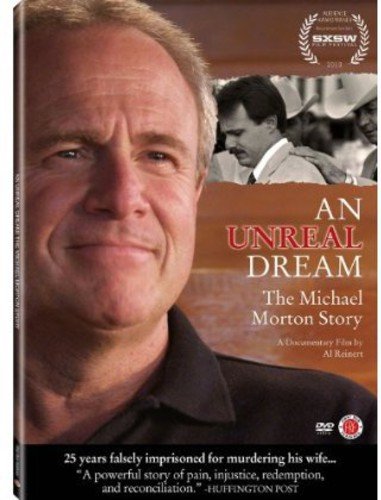
An Unreal Dream recounts the story of Michael Morton, a man who kissed his wife and son goodbye before heading to work one morning in 1986, and returned to find his wife beaten to death, his son headed for alternative custody, and himself the prime suspect. He was convicted of murdering his wife despite the fact that he wasn’t in the same place as her when it happened, and spent 25 years of a life sentence in a Texas penitentiary before justice saw its due.
How could this happen in this age of endless crime shows where the bad guys always get caught and the innocent always run free due to diligent super-sleuthing detective work? Sometimes TV paints a different picture than what we find in reality. Michael is one of many who have been wrongfully convicted for one reason or another. The Innocence Project non-profit that ultimately led to his release has freed over 700 other innocent people sent to prison for the wrong reasons.
So how does this happen? How does one obliterate “reasonable doubt” in the minds of a jury to the extent that they not only find an innocent person guilty, but also opt to incarcerate that person for the rest of their lives or put them to death (this did happen in Texas, after all). During the trial, a key witness on the scene that would have helped the defense’s case was never called to testify. Evidence indicating there was another suspect was suppressed by the prosecution to strengthen their case rather than give Morton a fair trial. There was virtually no defense case to make because the forensic time of death was miscalculated to a time that nullified any sort of alibi Morton would have had. It’s bad enough that what’s regarded as junk science was used to build a conviction, but even worse that other evidence working in Morton’s favor was buried in a file folder somewhere. Even worse is that once the Innocence Project started poking around and making requests, they were stopped at every turn by district attorneys and judges who encouraged them to “Just leave it alone.”
The thought that someone could be sent to prison solely to make the DA’s case record look better sickens me, yet I’m confident back-room politics happen in courtrooms around the country almost every day. For years, Morton retraced his steps, thoughts, words, built cases in his mind against all those he perceived wronged him and took him away from his son, but eventually he came to terms with it. Adjusting to life in prison was no easy task, and he explains some of what that was like. He was eventually given the opportunity for parole, but only if he demonstrated remorse for his alleged crime. What’s worse — lying to yourself to gain freedom, or staying locked away and sticking to what you know to be true even if no one else believes you. This isn’t some trumped-up Hollywood screenplay — this is someone’s life we’re talking about. It could happen to you, me, anyone.
Fortunately there are some truth-seekers out there fighting for the rights of the convicted against those who should have done so in the first place. Among them is the Innocence Project, a movement that has gained momentum and reopened cases that have been cold for years or decades based on new investigative methods that didn’t exist at the time of the original trial, like DNA testing against a huge database of known offenders. This is what led to the apprehension of the real killer in Morton’s case.
Over time, and even more so with his release, Morton has given up any hostility or disdain over what happened. He had a sort of religious experience that adjusted his perspective, and made him grateful for every day and every person in his life, friend or felon (which aren’t mutually exclusive in his case). The day he left prison, there was almost a riot in the cell block, not in rebellion, but in celebration and support that a man they’d all come to believe really was innocent was getting his due.
The DVD comes with a handful of features, mainly consisting of extended interviews and more details on the case. The feature is cut together pretty tightly, and keeps things moving, but surely will leave some wanting to know more. These features help with that. There are no subtitles on the disc, which was surprising for a presentation that is almost all monologue to camera — there is no narrator, it’s all interview footage and newsreels.
This is a moving story worth watching, and at 91 minutes, it won’t take up a huge chunk of your day to get some renewed perspective on life, friendship, family, how the justice system can go horribly awry at times, and who’s out there fighting to make things right.